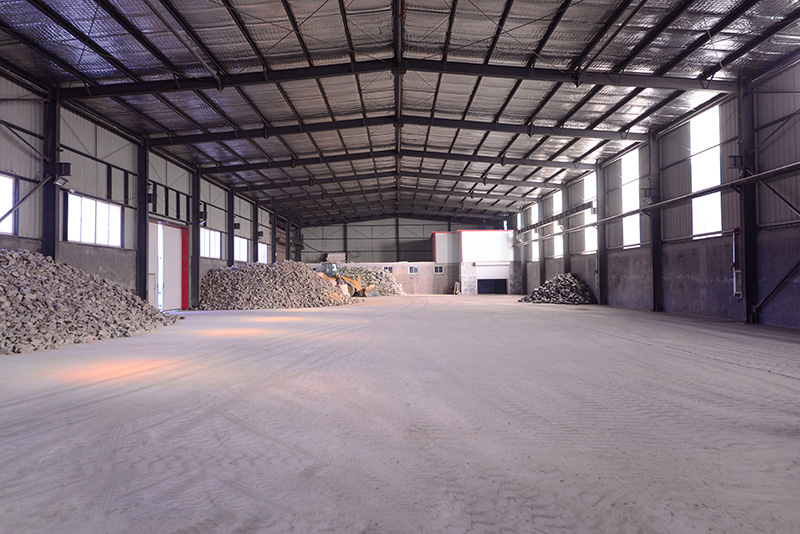Liaoning magnesium carbon brick manufacturers tell you the technical concept of metallurgical refractory materials
Posted time:2021-12-14 Page view:26510Magnesia carbon brick is the key auxiliary material to support the efficient operation of steel production, mainly reflected in the following points:

(1) The safety of production, as a material in contact with molten steel, abnormal damage or excessive erosion of functional refractories may cause molten steel leakage, and even cause serious safety accidents. For example, steel leakage caused by excessive erosion of ventilation elements, external splashing of molten steel caused by abnormal fracture during the use of immersion water outlet, flow control failure caused by excessive corrosion of plug rod, steel leakage caused by the failure of side seal plate function. Magnesia carbon brick amorphous refractory
(2) Production efficiency, refractory materials for metallurgical furnaces are key links in steel production, and their performance has an important impact on steel production efficiency. Ventilation components, skateboards damaged during use, function failure, etc. will be replaced offline to reduce the turnover of ladle; The submerged water gauge, plug rod and side seal plate are one of the key control links of the number of continuous casting furnace. Excessive erosion, erosion and abnormal fracture of materials will reduce the number of continuous casting furnace, and then affect the production efficiency of iron and steel.
(3) billet quality, the function of refractory materials used in metallurgical furnaces is particularly important, and whether its role is played has an important impact on billet quality.
The stirring effect of the breathable element has an important effect on the uniform composition and temperature of the liquid steel and the promotion of alloying. The long nozzle and the submerged nozzle protect the molten steel from secondary oxidation, and the submerged nozzle control the flow field of the mold plays an important role in promoting the inclusions to float, reducing the slag and stabilizing the flow field. The non-silicon and non-carbon immersion nozzle with anti-clogging function can not only reduce the carburization and silicon increase of molten steel, but also avoid the adhesion of alumina inside the nozzle and reduce the introduction of large inclusions in the billet. The MG-carbon immersion nozzle avoids alumina inclusion in the molten steel, which is conducive to improving the quality of cord steel.
The flow path of molten steel can be optimized, inclusions can be promoted and billet quality can be improved by setting turbulence controller of reasonable structure in tundish, optimizing combination of weir and dam, and using air curtain retaining wall to reduce dead zone. Optimize the shape of the plug rod head, improve the flow control sensitivity of molten steel, reduce the liquid level fluctuation in the mold, and reduce the possibility of slag rolling; The argon channel set in the whole plug rod head can also reduce the adhesion of alumina and improve the quality of billet.
Therefore, the performance and service behavior of refractory materials used in metallurgical kilns have an important impact on the safety and efficiency of steel production, especially on the production of high-quality steel.
Lightweight high aluminum brick features:
Lightweight high alumina brick has the characteristics of small volume density, low thermal conductivity, excellent heat insulation performance and stable quality. Can be used for all kinds of high temperature furnace lining or heat insulation layer. Using the mechanism of one-time molding, burnt additive manufacturing process, while retaining the traditional foam lightening method, pouring molding, product cross section structure uniform, porosity formed complementary through the honeycomb, so that the product compressive strength and heat insulation performance can reach a high level. The shape of all products is grinded and shaped, and the size deviation is small, which can meet the special needs of furnace masonry.
Lightweight high aluminum brick product content:
Lightweight refractory with alumina content of more than 48%, mainly composed of mullite and glass phase or corundum. Bulk density 0.4 ~ 1.35g/cm3. Porosity 66% ~ 73%, compressive strength 1 ~ 8MPa. Good thermal shock resistance. It is usually made of high bauxite clinker with a small amount of clay, which is poured and formed in the form of mud by gas generation or foam method after grinding, and is fired at 1300 ~ 1500℃. Sometimes industrial alumina can be used to replace part of the alumina clinker. It is used for lining and insulating layer of masonry kiln, as well as parts without erosion and scouring of strong high-temperature molten material. When directly in contact with the flame, the surface contact temperature shall not be higher than 1350℃.
